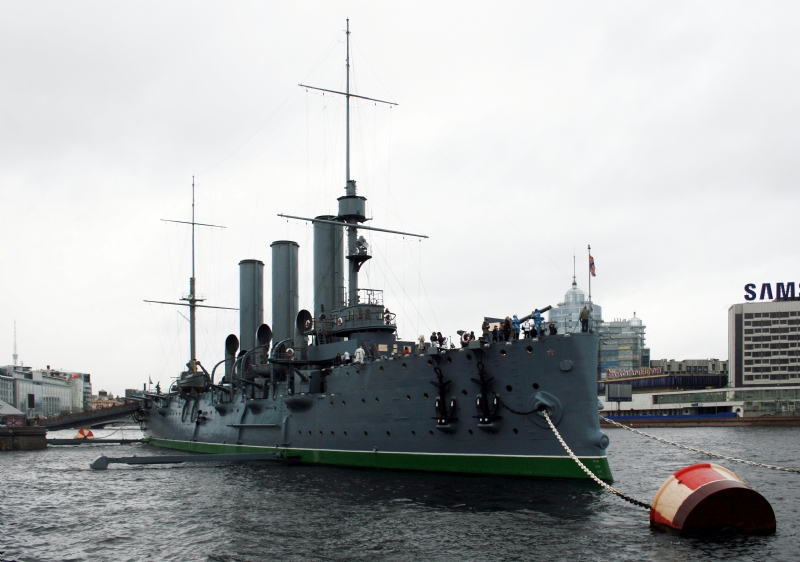Avrora Cruiser
Avrora is a Russian-protected cruiser currently preserved as a museum ship in Saint Petersburg. The Avrora was one of three Pallada class cruisers built in Saint Petersburg and for use in the Pacific. Three ships of this class also served during the Russo-Japanese War.
The historic cruiser Avrora survived the Battle of Tsushima and was taken under US protection in the Philippines. He eventually returned to the Baltic Fleet. One of the first events of the October Revolution in Russia occurred by the cruiser Aurora, who reportedly made the first shot, marking the beginning of the attack on the Winter Palace.
Avrora in 1903
Shortly after its completion, on 10 October 1903, the historic ship Avrora left Kronstadt for Port Arthur and became part of the reinforcement fleet. While in the Red Sea, the fleet was recalled to the Baltic Sea under the protest of Admiral Makarov, who specifically requested Admiral Virenius to continue his mission in Port Arthur. Only 7 parts of the reinforcement fleet were allowed to continue to the Far East. It is known that he left the reinforcement fleet and returned to the main port.
After returning to the port, the famous ships were resettled. Following the reassembly of the Aurora, an order was given to return to Port Arthur as part of the Russian Baltic Fleet. Aurora sailed as part of Admiral Oskar Enkvist's Cruiser Fleet. Avrora, one of the ships that changed world history on their way to the Far East, was slightly wounded by the confused friendly fire that resulted in the death of a priest and sailor on the ship in the Dogger Bank incident.
The historic ship Avrora joined the Tsushima war on 27 and 28 May 1905, along with the remaining ships from the Russian fleet. In this war, the captain of the ship Eugene R. Yegoryev and 14 crew members died with him. Later, Captain Arkadiy Konstantinovich Nebolsine, who served as the executive officer on the ship, took over the command. After the incident, Avrora took command of Rear Admiral Enkvist on the ship and became the flagship.
Revolution Helper: Cruiser Avrora
During the First World War, the historic ship Avrora carried out coastal bombardment and patrol missions in the Baltic Sea. In 1915, the gun was changed to fourteen 152 mm guns. The famous ship was moved to Petrograd in late 1916 for major repairs. Due to the revolution in the region where the ship is transported, the city is quite complicated.
Some of the crew on the ship also participated in the 1917 February Revolution. Captain Mikhail Nikolsky, the commander of the famous ship, died while trying to suppress it in the uprising. Later, Aleksandr Belyshev was elected as captain and thus a revolutionary committee was formed. Most of the crew of the historic cruiser Avrora joined the Bolsheviks, supporting them in preparation for the communist revolution.

